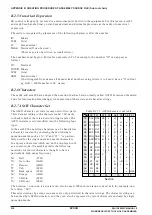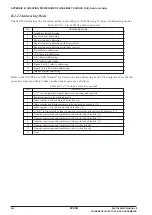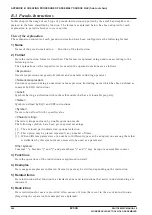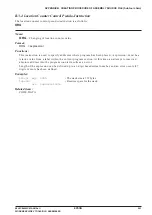
APPENDIX B CREATING PROCEDURE OF ASSEMBLY SOURCE FILE (Sub tool chain)
244
EPSON
S5U1C88000C MANUAL II
WORKBENCH/DEV TOOLS/OLD ASSEMBLER
B.3 Pseudo-Instructions
In this chapter the usage of each type of pseudo-instruction supported by the asm88 and sap88 is ex-
plained in the form classified by function. The format as explained below has been adopted for each
explanation to permit reference to it at any time.
View of the explanation
The explanation contents of each pseudo-instruction have been configured as the following format.
1) Name
Name of the pseudo-instruction . . . Function of the instruction
2) Format
Here the instruction format is described. The format is explained using notations according to the
following rules.
The explanations of the respective terms used in the operand notations are as follows.
<Expression>
General expression composed of symbols and constants including operators
<Numerical expression>
Constant expression using a numerical value expression (including name which has been defined as
constant by EQU instruction)
<Label>
Symbols having a definition within the self-module that has a relocatable property
<Name>
Symbols defined by EQU and SET instructions
<Symbol>
Name to be defined for the specific value
<Character string>
Character strings enclosed by double quotation marks
The following symbols have been given special meanings.
{ } ...
The enclosed part indicated an optional selection.
{ }* ..
This option may be placed repeatedly any number of times.
| | | ..
When different parameters of a number of different types can be adopted, one among them that
is delimited by this symbol must necessarily be used as a parameter.
Other symbols
Commas ","s, brackets "[" and "]", and parentheses "(" and ")" may be input as assembler sources.
3) Functions
Here the operations of the instruction are explained in detail.
4) Examples
Here usage examples are indicated. Several types may be written depending on the instruction.
5) Related items
Here instructions that function in a similar manner and instructions that assist in understanding are
indicated.
6) Restriction
Here restrictions for use are provided. Also, causes of errors that occur in the use of an instruction
(forgetting the separator, for example) are explained.















































